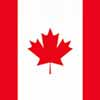Choose Your Study Destiny
Choice is your own !! Pick a destination which you want to study in Abroad. And Agile Migrate Consultants Will help you any at time ..


Canada is the second-largest country in the world by total area, covering approximately 9.98 million square kilometers (3.85 million square miles). It is located in North America and is bordered by the United States to the south, with its northernmost territories extending into the Arctic. Canada is known for its diverse geography, which includes vast forests, mountains, plains, and an extensive coastline.
Geography
Canada can be divided into several physiographic regions:
The Canadian Shield: A large area of exposed Precambrian rock that covers much of eastern and central Canada, characterized by numerous lakes and forests.
Interior Plains: Flatlands that stretch across the central part of the country, providing fertile ground for agriculture.
Western Cordillera: A mountainous region that includes the Rocky Mountains in British Columbia and Alberta.
Great Lakes-St. Lawrence Lowlands: A fertile area that hosts a significant portion of Canada's population and economic activity.
Appalachian Region: Located in eastern Canada, this area features rolling hills and older mountain ranges.
Hudson Bay Lowlands: A wetland region that is home to diverse wildlife and ecosystems.
Arctic Archipelago: Comprising numerous islands in the Arctic Ocean, this region is characterized by harsh climates and ice-covered landscapes.
Canada boasts the world's longest coastline at approximately 243,042 kilometers (151,019 miles), and it has over two million lakes, which contain a significant portion of the world's fresh water.
Climate
Canada's climate varies widely due to its vast size. The northern regions experience extremely cold winters with short summers, while southern areas have more temperate climates. Major climatic regions include:
Maritime Climate: Found along the coasts, characterized by milder temperatures and higher precipitation.
Continental Climate: Present in central Canada, featuring cold winters and warm summers.
Arctic Climate: Extremely cold with long winters and short summers in northern territories.
Government
Canada operates as a parliamentary democracy and a constitutional monarchy, with King Charles III as the head of state represented by the Governor General. The government consists of three branches:
Legislative Branch: Comprising the Parliament, which includes the Senate (appointed members) and the House of Commons (elected representatives).
Executive Branch: Led by the Prime Minister (currently Justin Trudeau), who heads the government and cabinet.
Judicial Branch: Independent courts that interpret laws and ensure justice.
The Canadian Constitution Act of 1867 established the framework for governance, emphasizing representative democracy where elected officials make decisions on behalf of citizens.
Economy
Canada has a highly developed economy that ranks among the largest globally. Key sectors include:
Natural Resources: Rich in minerals, oil, gas, timber, and fisheries.
Manufacturing: Diverse industries producing automobiles, machinery, aerospace products, and technology.
Services Sector: Dominating economic activity, including finance, healthcare, education, and tourism.
Culture
Canada is known for its cultural diversity due to significant immigration throughout its history. The country celebrates multiculturalism through various festivals, cuisines, languages (English and French are official), and traditions. Indigenous cultures also play a vital role in shaping Canadian identity. In summary, Canada is a vast country with diverse geography, climates, a stable government structure based on democratic principles, a robust economy driven by natural resources and services, and a rich cultural tapestry that reflects its multicultural society.
Canada is a federation of provinces & territories.It is a safe and peaceful country. It is a
country which is one of the best places to live in the world. It is a multicultural country.
Ottawa is the Capital of Canada, but the largest city in Canada is Toronto. However the
largest population is in Ontario with capital city of Toronto having half of the population
in Ontario.
The Education is funded and overseen by provincial, and local governments in Canada and
is guarded rigorously. The policy approach “holistic” but with emphasis on overseas student
recruitment.
Universities offer degrees as well as diplomas and certificate programs.They may also offer
combined degree diploma programs with strong student support services and campus
environment..
Courses are industry-driven with job-ready preparation which is an
attractive feature. Co-op students are allowed to work. Colleges help in obtaining
employment authorization work
Course fees will depends on the course and colleges
Choice is your own !! Pick a destination which you want to study in Abroad. And Agile Migrate Consultants Will help you any at time ..